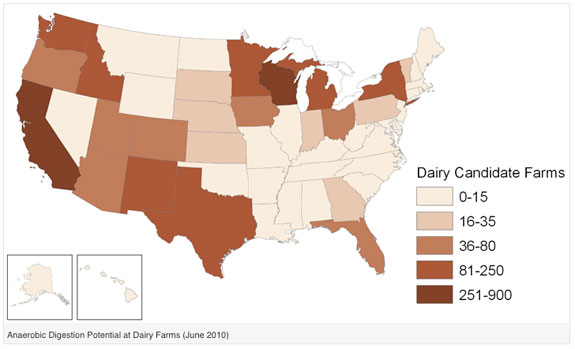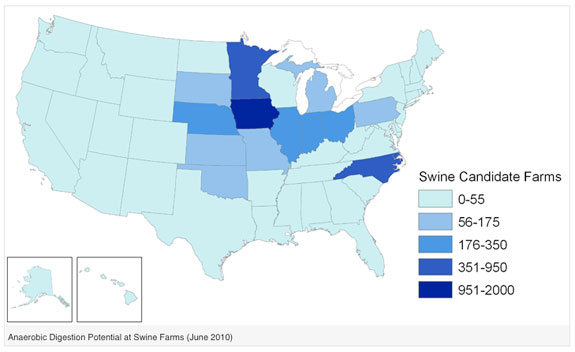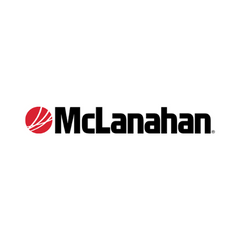Biogas recovery systems at livestock operations can be a cost-effective source of clean, renewable energy that reduces greenhouse gas emissions. Because of its high energy content, biogas can be collected from manure and burned to supply on-farm energy needs for electricity or heating. With growing interest in clean, renewable energy, many opportunities exist for farmers to market the biogas collected from anaerobic digestion systems. Experience has shown that the profitability of biogas systems depends on the size of the operation, the method of manure management, and local energy costs.
There is great potential to provide renewable energy with an estimated 8,200 U.S. dairy and swine operations that could support biogas recovery systems. Biogas recovery systems at these facilities have the potential to collectively generate more than 13 million megawatt-hours (MWh) per year and displace about 1,670 megawatts (MW) of fossil fuel-fired generation. In addition, biogas recovery systems are also feasible at some poultry operations.

For more details on the methodology and sample calculations, AgSTAR's 2010 Market Opportunities Report (PDF) assesses the market potential for biogas energy projects at swine and dairy farms in the United States. For the top ten swine and dairy states, the guide characterizes the sizes and types of operations where biogas projects are technically feasible, along with estimates of potential methane production, electricity generation, and greenhouse gas emission reductions.
For a quick summary of the potential, refer to AgSTAR's fact sheet on the Market Opportunities for Biogas Recovery Systems (PDF) that identifies the top 10 states for energy generation potential from dairy and swine manure biogas recovery systems.
The following maps, which are shaded to represent the biogas energy generation potential, provide an overview of the states with the highest promise for dairy and swine biogas recovery projects. PD


—Information and graphics provided by AgSTAR




